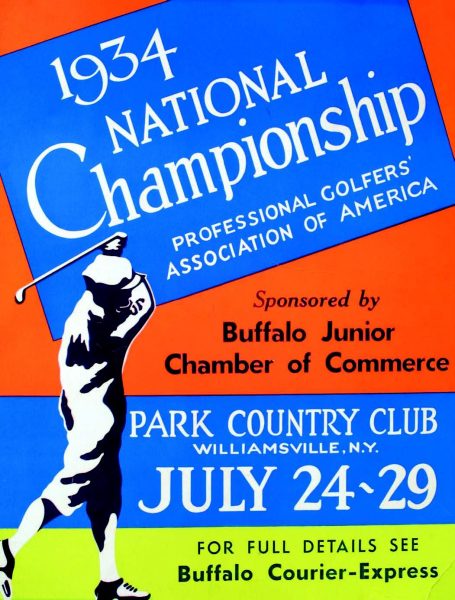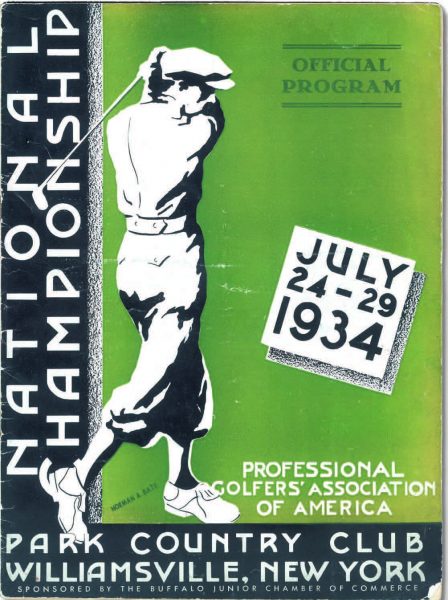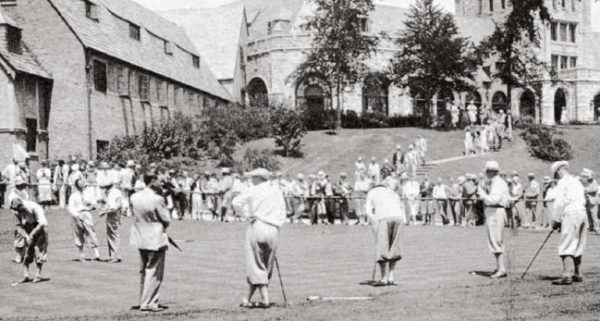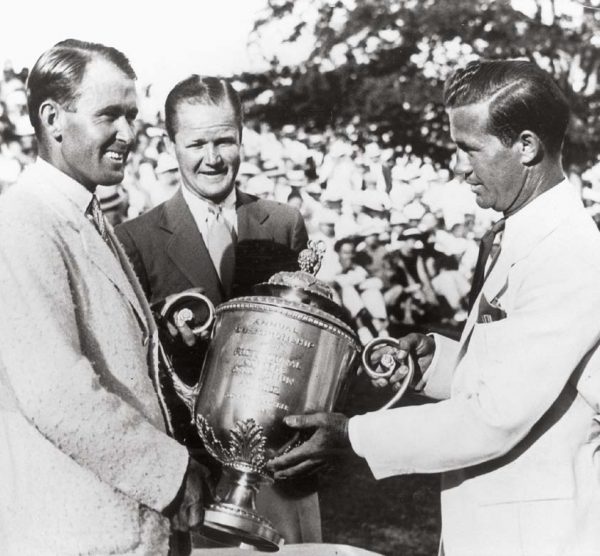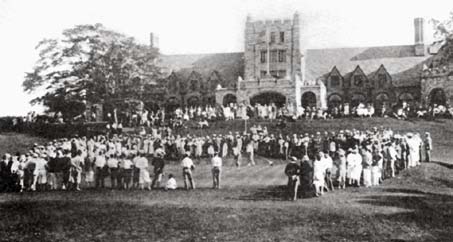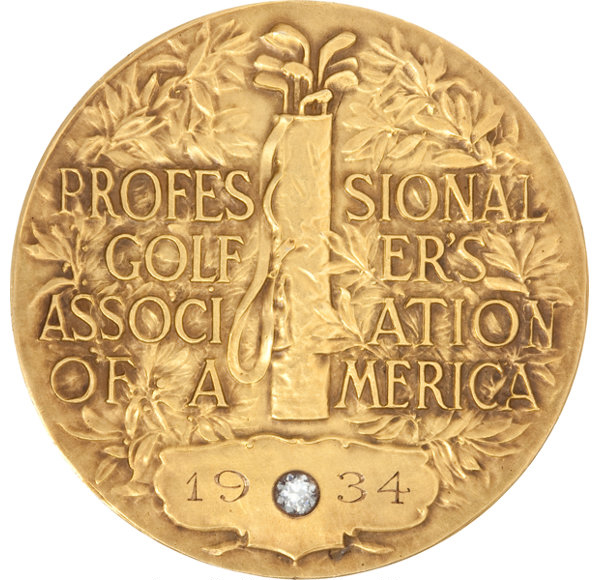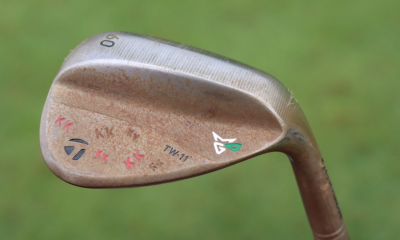News
2023 PGA Championship preview: The “other” WNY club that hosted the PGA

In 1980 at Rochester’s Oak Hill Country Club, Jack Nicklaus claimed his fifth PGA Championship. 23 years after, Shaun Micheel laced a brilliant 7-iron into the 18th hole to fend off a Chad Campbell challenge to Oak Hill’s second PGA hosting. 10 years further on, Jason Dufner confirmed for the world what it had long suspected and anticipated: that he had what it took to hoist a major event trophy. The third Wannamaker trophy to be awarded at the upstate New York club, was lifted by Dufner.
Would you be surprised if I told you that another PGA Championship had taken place in western New York? That it was held 73 miles to the west, 46 years prior to #JackIsBack. And, most important, it was decided on the club’s second green, which turned out to be the 38th hole of the day. If so, pick up your jaw and settle in, because I have a story for you.
The Park Country Club of Buffalo was founded in 1903, in what is now Delaware Park, a Buffalo Olmsted Park. The club decided to move east as the city continued to grow, settling in at a bucolic tract along Sheridan Dr. in Williamsville. Clifford Wendehack designed one of his most notable clubhouses there, and Charles Alison was entrusted with the laying out of the golf course. Seven years after it opened, the Park Club’s Williamsville Course was entrusted to host one of the game’s great championships.
In 1934, the PGA Championship was decided at match play. The tournament began on Tuesday, July 24th, and the field was reduced to the top 31 qualifiers, plus the defending champion, Gene Sarazen. Sarazen had won the year before at the Seth Raynor-designed Blue Mound Country Club in Wisconsin. 114 golfers attempted to qualify via 36 holes of single-day, onsite qualifying. Bob Crowley of Massachusetts was the medalist, and Paul Runyan set the course record in the afternoon, with a 6-under 66. 10 players tied for the final eight spots in match play, and they met at 8 p.m., as the sun was setting, to determine who would advance.
Beginning on Wednesday, all matches would reach 36 holes, unless the fates decided that a player was unable to overcome his opponent’s advantage. That first day saw one match exceed the mandated 36 holes, and one other match reach the 35th hole. The largest margin of victory was by 12 & 10, with Ky Laffoon of Arkansas coming out on top.
Day two of match play saw the defending champion exit at the hands of Al Watrous. The second day of match play saw a decidedly more-balanced set of competitions, with all matches reaching at least the 33rd green. Moving into the quarterfinals were Watrous, Craig Wood, “Lighthorse” Harry Cooper, Densmore Shute, Al Houghton, Dick Metz, Gene Kunes, and Bob Crowley. Of the remaining golfers, Paul Runyan figured into two interesting storylines. He was one of the hottest golfers on tour, with five titles to his name thus far that year. In addition, he had been Craig Wood’s student when he served as his assistant pro at Forest Hills Country Club.
Day three saw four golfers win their way into the semifinals. Al Watrous lost to Craig Wood by 2 & 1. Watrous would come close over the years, but would never win a major championship. Wood was a year away from being victimized by the shot heard ’round the world, Gene Sarazen’s electrifying 4-wood for double eagle at the Masters. The Lake Placid pro, Wood, received Densmore Shute as his semifinal-round opponent. Shute had won The Open in 1933 and would win a pair of PGA Championships in 1936 and 1937. At Park, he would lose to Wood by a 2 & 1 margin. The other semifinal pitted “Little Poison,” Paul Runyan, against Gene Kunes. Runyan would close Kunes out on the 16th green, by 4 & 2. Thus was the final match set, with the teacher and the student paired in combat.
The final match was a see-saw affair, with Wood taking a lead after the morning 18, only to see Runyan rally in the afternoon to square the match. Wood went back in front at the 11th hole of the afternoon 18, but Runyan won two of the next four holes to seize an advantage. At the uphill 17th, Wood nearly holed for two, but his three was enough to square the match. Nervy par putts from a dozen feet from both golfers sent the match to extra holes.
Bob Morber, a long-time member of the Park Club, recalls a 1998 visit at the club with Paul Runyan, in which the eventual champion recounted how the bridge over Ellicott Creek was reserved for the competitors, and the gallery had to splash through the waters to follow the playoff. Both golfers made birdie at the par-5 1st hole, with Wood missing an eight-foot putt for eagle and the win. At the 38th hole of the day, Wood made a mess of things, eventually missing from 12 feet for par. Runyan made a birdie and became the 17th winner of the PGA Championship.
During his visit to the Park Club, Runyan also recalled how open the course was. As he reached the 14th tee, he asked when the trees went up along the left edge of the fairway. What had once been an open tee shot, was now compelled to go right, then back left. During the 2010s, Park Club undertook a restorative project with Ian Andrew as lead architect. Unnecessary trees were removed, sightlines were restored, and the course was returned to the strategic layout that Charles Alison had envisioned.
Today, the Park Club continues to offer one of the finest challenges in western New York. The clubhouse underwent an expansion, and the new grill room was named in honor of the 1934 PGA Champion. The Runyan Room is bedecked with artifacts from that tournament, including photos, programs, and tickets. One of the photographs features Runyan and Morber in 1998, on the 18th green. It was taken moments after Runyan holed a massive putt from the back fringe to a front hole location, something that no one but a champion can muster.
Next month, the PGA of America will return to Oak Hill’s East course for its fourth PGA Championship at the storied Rochester layout. This writer will spend more than a moment recalling an event played nearly 90 years ago, at a club with Oak Hill reciprocity, in the suburbs of neighboring Buffalo.
Credit and gratitude to Heritage Auctions for the championship medal image.
Credit and gratitude to Park Country Club for all other images.
- LIKE25
- LEGIT2
- WOW6
- LOL0
- IDHT1
- FLOP0
- OB0
- SHANK0
News
Morning 9: Tiger confirms playing schedule | Player: This caused Tiger’s downfall

|
- LIKE1
- LEGIT1
- WOW0
- LOL1
- IDHT1
- FLOP0
- OB0
- SHANK1
Tour Photo Galleries
Photos from the 2024 CJ Cup Byron Nelson

GolfWRX is on site this week in McKinney, Texas, at the 2024 CJ Cup Byron Nelson (FKA the AT&T Byron Nelson).
Last year at TPC Craig Ranch, Jason Day ended a five-year winless streak. J-Day is in the field again, as are Jordan Spieth, Tom Kim, and Will Zalatoris.
We have our usual assortment of general galleries, WITBs, and pullout albums for your perusal. As always, we’ll continue to add links to additional albums as they make their way to us from the Lone Star State.
Check out links to all our photos below.

General Albums
- 2024 CJ Cup Byron Nelson – Monday #1
- 2024 CJ Cup Byron Nelson – Monday #2
- 2024 CJ Cup Byron Nelson – Tuesday #1
- 2024 CJ Cup Byron Nelson – Tuesday #2
- 2024 CJ Cup Byron Nelson – Tuesday #3
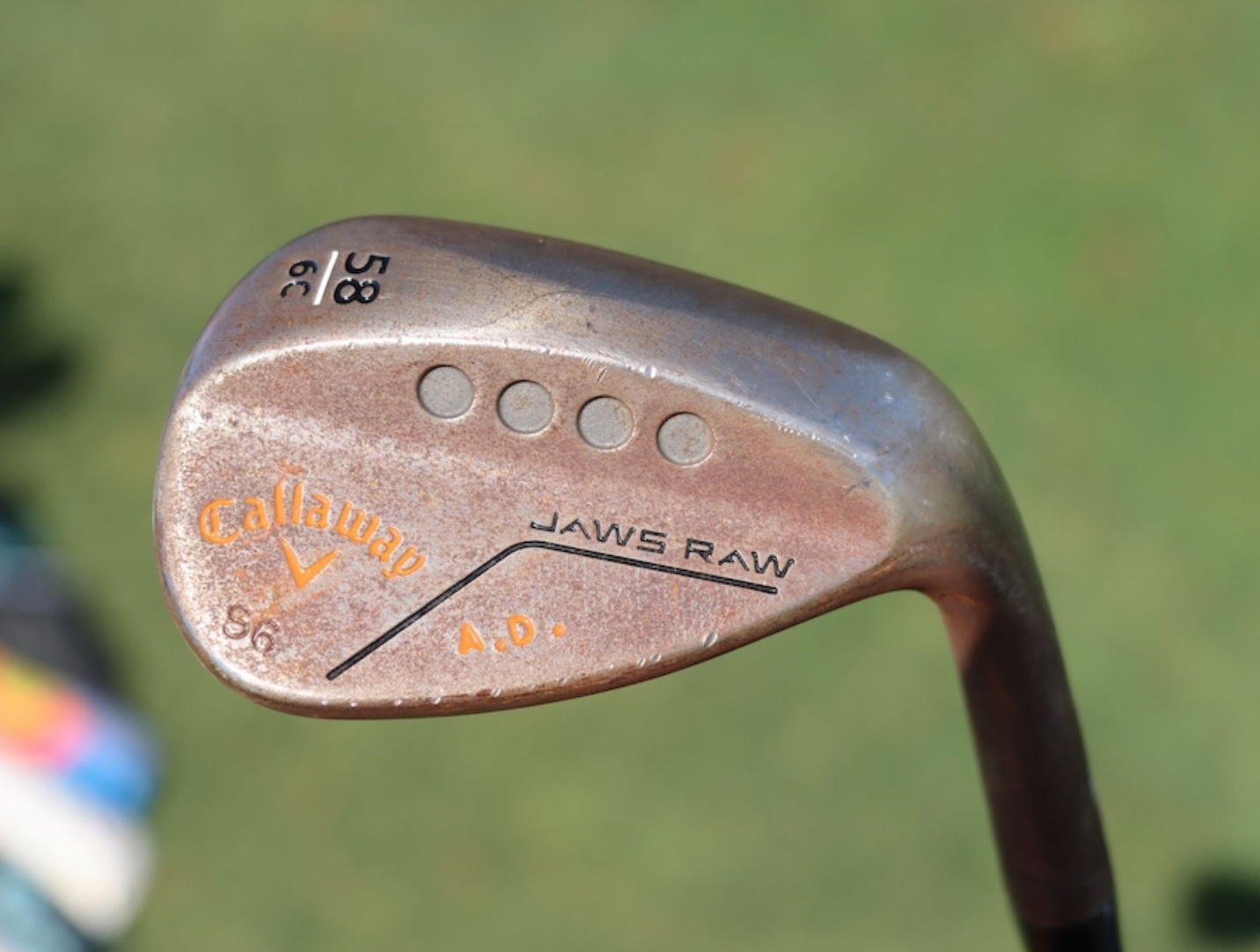
WITB Albums
- Pierceson Coody – WITB – 2024 CJ Cup Byron Nelson
- Kris Kim – WITB – 2024 CJ Cup Byron Nelson
- David Nyfjall – WITB – 2024 CJ Cup Byron Nelson
- Adrien Dumont de Chassart – WITB – 2024 CJ Cup Byron Nelson
- Jarred Jetter – North Texas PGA Section Champ – WITB – 2024 CJ Cup Byron Nelson
- Richy Werenski – WITB – 2024 CJ Cup Byron Nelson
- Wesley Bryan – WITB – 2024 CJ Cup Byron Nelson
- Parker Coody – WITB – 2024 CJ Cup Byron Nelson
- Peter Kuest – WITB – 2024 CJ Cup Byron Nelson
- Blaine Hale, Jr. – WITB – 2024 CJ Cup Byron Nelson
- Kelly Kraft – WITB – 2024 CJ Cup Byron Nelson
- Rico Hoey – WITB – 2024 CJ Cup Byron Nelson
Pullout Albums
- Adam Scott’s 2 new custom L.A.B. Golf putters – 2024 CJ Cup Byron Nelson
- Scotty Cameron putters – 2024 CJ Cup Byron Nelson
- Ben Griffin playing Maxfli golf ball
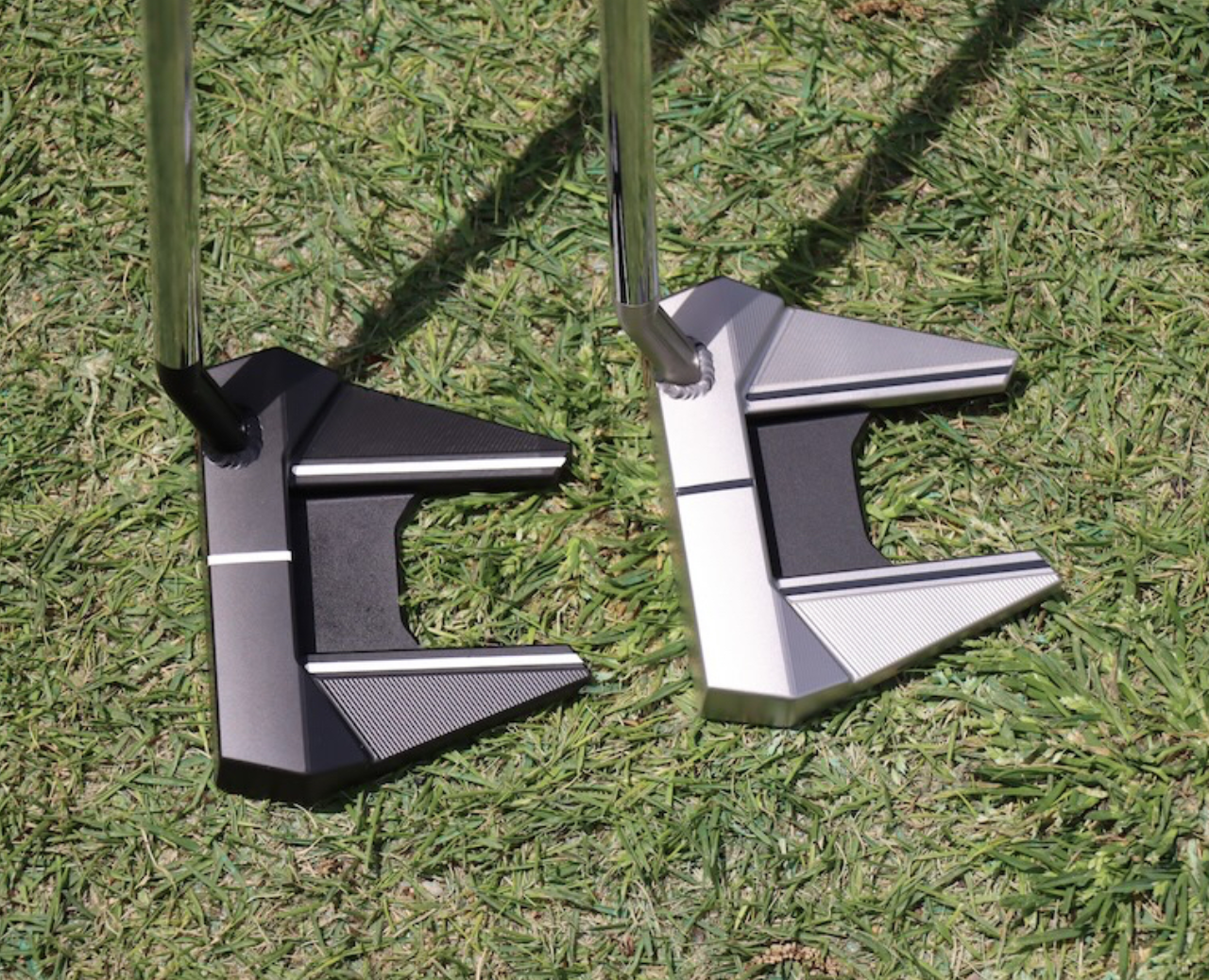
See what GolfWRXers are saying in the forums.
- LIKE10
- LEGIT0
- WOW0
- LOL0
- IDHT0
- FLOP0
- OB0
- SHANK1
News
Vincenzi’s 2024 CJ Cup Byron Nelson betting preview: International talent to shine
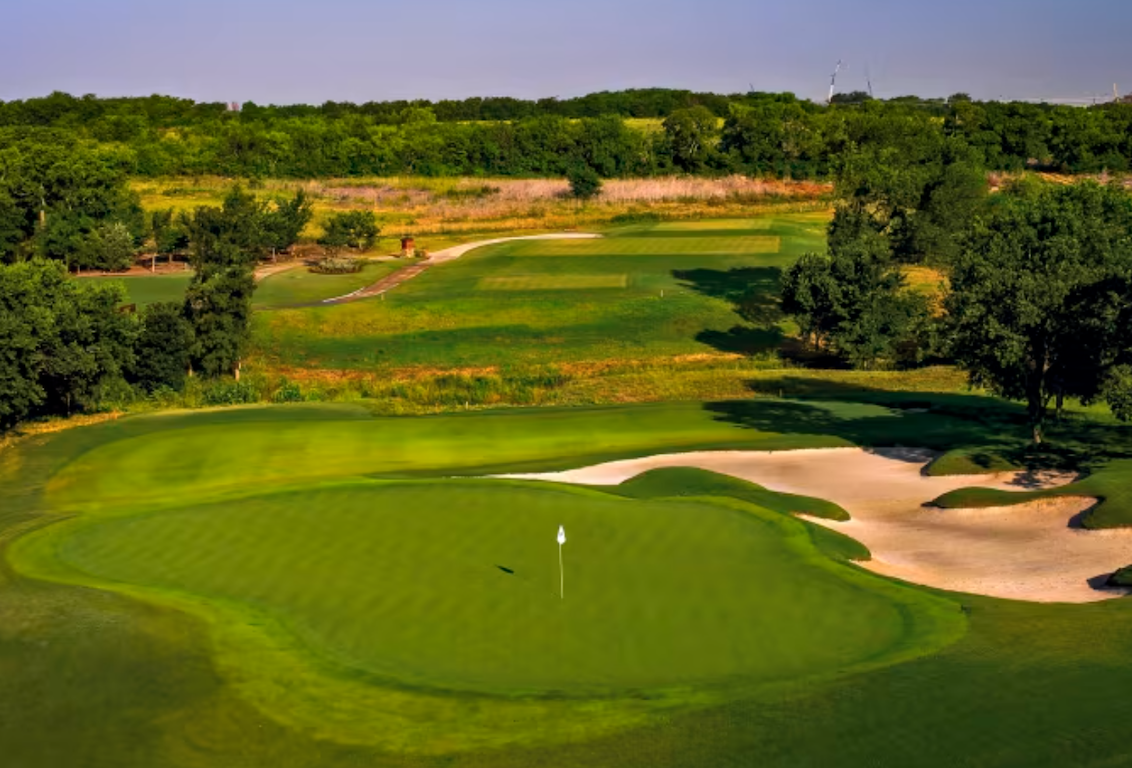
As anticipation mounts for the 2024 PGA Championship at Valhalla in a few weeks, the PGA Tour makes a pit stop in McKinney, Texas to play The CJ CUP Byron Nelson.
Last year was the third time TPC Craig Ranch hosted the Byron Nelson. Prior to 2021, the event was held at Trinity Forest Golf Club in Dallas.
TPC Craig Ranch is a 7,414-yard par-71 that features Bentgrass greens. The event historically plays relatively easy, and that has remained the case in the three editions at TPC Craig Ranch.
The course structure may provide some additional intrigue with the par-3 17th featuring a stadium setup called “Ranch 17” which is reminiscent of the 16th hole at TPC Scottsdale. The course also has both long and difficult par-4s mixed with drivable par-4s, which should create some exciting moments.
There are 156 golfers in the field this week, and many stars will be taking the week off to prepare for 2023’s second major championship in a few weeks and a “signature event” at Quail Hollow next week. Notable players in the field include Jordan Spieth, Jason Day, Sungjae Im, Stephan Jaeger, Tom Kim, Si Woo Kim, Min Woo Lee, Alex Noren, Adam Scott and Will Zalatoris.
Past Winners of the AT&T Byron Nelson
- 2023: Jason Day (-23 at TPC Craig Ranch)
- 2022: K.H. Lee (-26 at TPC Craig Ranch)
- 2021: K.H. Lee (-25 at TPC Craig Ranch)
- 2019: Sung Kang (-23)
- 2018: Aaron Wise (-23)
- 2017: Billy Horschel (-12)
- 2016: Sergio Garcia (-15)
- 2015: Steven Bowditch (-18)
Key Stats at TPC Craig Ranch
Let’s take a look at five key metrics for TPC Craig Ranch to determine which golfers boast top marks in each category over their last 24 rounds.
Strokes Gained: Approach
Strokes Gained: Approach remains the best measure of current form.
Hot iron play will be at a premium this week. Last year, Jason Day gained 6.4 strokes on approach, which was fourth in the field. In 2022, K.H. Lee was ninth in the field in Strokes Gained: Approach, gaining 5.2 strokes. In his 2021 victory, he was second in the field and gained 8.3 strokes on the field in the category.
Strokes Gaines: Approach Over Past 24 Rounds
- Tom Hoge (+1.12)
- Keith Mitchell (+1.02)
- Henrik Norlander (+0.99)
- Ryan Moore (+0.98)
- Ben Martin (0.80)
Strokes Gained: Off the Tee
Fairways are wide at TPC Craig Ranch.
Distance will certainly be helpful, and there aren’t too many difficult holes on the course. Golfers who put themselves in position off of the tee this week should have a sizable advantage.
Strokes Gained: Off the Tee Over Past 24 Rounds
- Peter Kuest (+0.93)
- Kevin Daugherty (+0.91)
- Alejandro Tosti (+0.83)
- Keith Mitchell (+0.82)
- Kevin Tway (+0.74)
Birdie or Better %
There aren’t many hazards on the course, and all of the par-5s should be reachable in two for the majority of the players in the field. I am anticipating a birdie fest, and this statistic should be helpful in finding the birdie-makers.
Birdie or Better % Over Past 24 Rounds:
- Wesley Bryan (31%)
- Kelly Kraft (26.2%)
- Peter Kuest (25.9%)
- Matti Schmid (25.7%
- Jimmy Stanger (25.2%)
Strokes Gained: Putting (Bentgrass)
Many golfers on TOUR have some major putting surface variance in their statistics and prefer Bentgrass to other surfaces.
Bentgrass is common in Texas, and we often see golfers who play well in Texas continue to do so, finding a great feel around the greens.
Strokes Gained: Putting (Bentgrass) Over Past 24 Rounds:
- Maverick McNealy (+0.92)
- Aaron Baddeley (+0.87)
- Callum Tarren (+0.86)
- Harry Hall (+0.81)
- Nick Hardy (+0.69)
Course History
This statistic will tell us which players have performed the best at TPC Craig Ranch over the past three seasons.
Course History Over Past 12 Rounds:
- Jordan Spieth (+2.69)
- K.H. Lee (+2.59)
- Seamus Power (+1.84)
- Ryan Palmer (+1.76)
- Adam Scott (+1.72)
CJ CUP Byron Nelson Model Rankings
Below, I’ve compiled overall model rankings using a combination of the five key statistical categories previously discussed — SG: Approach (27%), SG: OTT (24%), Birdie or Better % (18%), Course History (17%) and SG: Putting Bentgrass (16%).
- Alex Noren
- Adam Scott
- Keith Mitchell
- Si Woo Kim
- Stephen Jaeger
- Jordan Spieth
- Jhonnatan Vegas
- Nate Lashley
- Brice Garnett
- Tom Hoge
2024 CJ CUP Byron Nelson Picks
Byeong Hun An +3000 (DraftKings)
Byeong Hun put together an excellent performance at The Masters, finishing T16, which ties his best ever finish at a major championship (also T16 at 2019 U.S. Open). The South Korean gained 9.16 strokes from tee to green, which ranked 2nd in the field behind only the champion, Scottie Scheffler.
An’s next start at Harbour Town didn’t go as well (67th), but he still had a fantastic ball striking week. The 32-year-old bled strokes both around and on the greens, which was his eventual undoing. In his past three starts, An has gained significant strokes on the field both off the tee and on approach.
Benny had a strong start at last year’s Byron Nelson, finishing in a tie for 14th. With limited challenges on the course, he shouldn’t have to do much scrambling. In his past 24 rounds, he ranks 17th in the field in Strokes Gained: Off the Tee and 17th in the field in birdie or better percentage. The putter is up and down per usual, but his ceiling putting weeks with his LAB Golf putter in 2024 are higher than they’ve been in past seasons.
An is starting to become my “white whale” of the PGA Tour, but I believe in his talent and TPC Craig Ranch is a course that should suit his excellent tee to green play.
Mackenzie Hughes +5500 (FanDuel)
Mackenzie Hughes is quietly putting together a very good season. He finished in a tie for 3rd at the Valspar Championship and followed that up with a T14 at the Texas Children’s Houston Open.
In his past 36 rounds in Texas, the Canadian ranks 5th in the field in Strokes Gained: Total. Last year, he finished in a tie for 14th at this event and gained strokes putting and off the tee. Mackenzie played well that week despite being in extremely poor form. He missed two cuts in a row prior to the event, and four consecutive cuts immediately after. His irons were off that week, but in 2024, we’ve seen an improvement in Hughes’ approach game. He now comes to the event playing some steady golf. He’s gained strokes on approach in four of his past five events and is hitting the ball very well from tee to green.
Hughes has two victories on the PGA Tour, both coming in relatively low-scoring affairs (-17 in each). He will need to go a bit deeper to win the CJ Cup Byron Nelson but has the type of putter that can keep pace in a birdie barrage.
Seamus Power +7000 (FanDuel)
After struggling over the past few seasons with injuries, Seamus Power seems as if he is rounding back into the form that made him a really consistent player on the PGA Tour.
Power finished T12 in his most recent start at the RBC Heritage, which is encouraging considering it was a “signature event” with a very strong field. For the week, the Irishman gained 4.4 strokes on approach and 2.8 strokes putting, which is the combination he’s used in the past to contend on Tour.
In his three trips to TPC Craig Ranch, Power is yet to finish outside of the top-20, with his best finish being a T9 in 2019. He ranks 4th in Strokes Gained: Total at the course. The 37-year-old thrives on easy tracks and has won in 2021 (Barbasol Championship) and 2022 (Butterfield Bermuda) on easier layouts with weaker fields.
Power has the game to go extremely low and I believe he can get back in the winner’s circle for the third time in four years.
Chan Kim +10000 (FanDuel)
Chan Kim has been striking the ball beautifully this season and is a proven winner with two wins on the Korn Ferry Tour in 2023 as well as eight career Japan Tour wins.
At last week’s Zurich Classic, Kim and his partner Doug Ghim finished in a tie for 28th. Prior to that, the South Korean T14 at the Valero Texas Open and T6 at the Corales Puntacana Championship. His success this season in Texas as well as he propensity to play his best golf on the PGA Tour’s easier courses make him and ideal fit for TPC Craig Ranch.
2024 has given plenty of longshot winners on the PGA Tour, and with a birdie fest like this, I believe there’s a strong chance we get another this week in McKinney, Texas.
Alejandro Tosti +10000 (FanDuel)
Alejandro Tosti is one of the most polarizing players on the PGA Tour thus far in the 2024 season. His antics can rub many the wrong way, but he’s shown on a few occasions that he has what it takes to compete in Tour events.
This season, Tosti has been elite off the tee. In his past 24 rounds, he ranks 2nd in Strokes Gained: Off the Tee. The Argentine hits it long and straight, which works at any course on earth. He got a taste of contention a few starts ago at the Texas Children’s Houston Open, finishing in a tie for 2nd place.
Tosti had a fantastic year in 2023 on the Korn Ferry Tour, where going low is a prerequisite to success. If this turns to a shootout, which it likely will, the 27-year-old has the ability to set the pace. Tosti will look to become the second Argentine to win in Texas in the past two seasons after Emiliano Grillo emerged victorious at last year’s Charles Schwab Challenge.
C.T. Pan +15000 (FanDuel)
Outside of a T3 at the Mexico Open, C.T. Pan doesn’t have strong results this season in terms of finishes. However, over his past two starts, Pan’s iron play has come alive. At The Players, he gained 6.6 strokes on approach. At the Valero Texas Open, he gained 3.7. At last week’s Zurich Classic, Pan and his partner Kevin Yu finished T28. For a player who can get extremely hot with his scoring clubs, I believe he’s playing better than the results have shown over the past month or so.
Last season, Pan finished 4th at TPC Craig Ranch and was spectacular across all the major stat categories. In his past 36 qualifying rounds, he ranks 16th in Strokes Gained: Total in Texas.
Pan has won on the PGA Tour at the RBC Heritage and is always a player that I believe has what it takes to win on a Sunday if he finds himself in contention.
- LIKE16
- LEGIT10
- WOW3
- LOL0
- IDHT0
- FLOP3
- OB0
- SHANK4
-

 19th Hole2 weeks ago
19th Hole2 weeks agoJustin Thomas on the equipment choice of Scottie Scheffler that he thinks is ‘weird’
-

 19th Hole2 weeks ago
19th Hole2 weeks ago‘Absolutely crazy’ – Major champ lays into Patrick Cantlay over his decision on final hole of RBC Heritage
-

 19th Hole3 weeks ago
19th Hole3 weeks agoReport: LIV Golf identifies latest star name they hope to sign to breakaway tour
-

 19th Hole3 weeks ago
19th Hole3 weeks agoNeal Shipley presser ends in awkward fashion after reporter claims Tiger handed him note on 8th fairway
-

 19th Hole3 weeks ago
19th Hole3 weeks agoBrandel Chamblee has ‘no doubt’ who started the McIlroy/LIV rumor and why
-

 19th Hole1 week ago
19th Hole1 week agoLET pro gives detailed financial breakdown of first week on tour…and the net result may shock you
-

 Equipment3 weeks ago
Equipment3 weeks agoJason Day on his recent switch into Srixon ZX5 and ZX7 Mk II irons
-
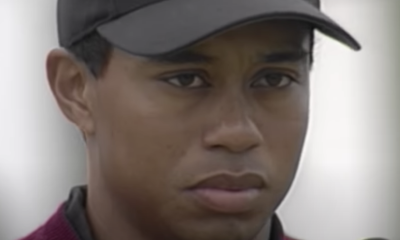
 19th Hole5 days ago
19th Hole5 days agoGary Player claims this is what ‘completely ruined’ Tiger Woods’ career

